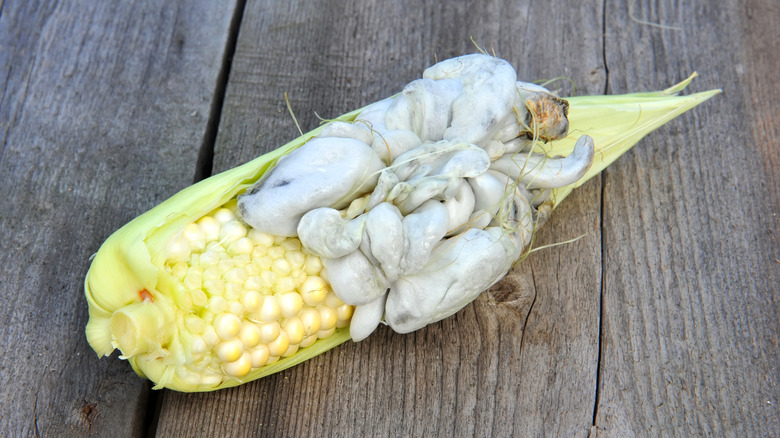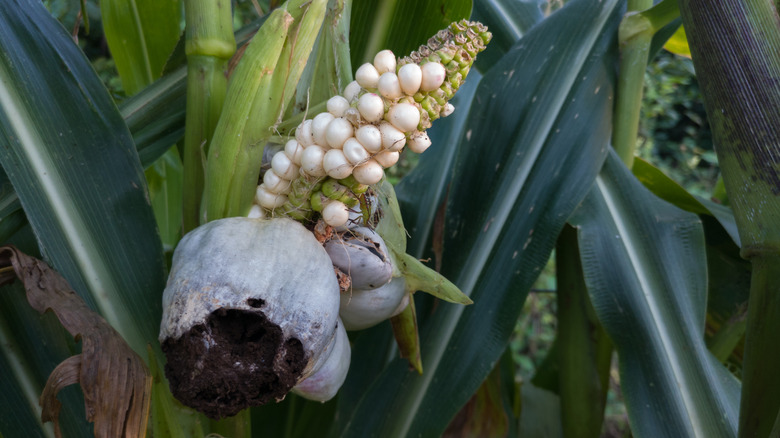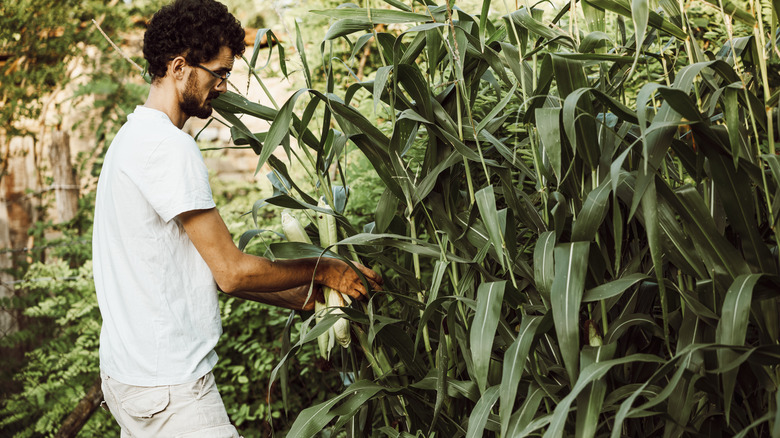Corn Smut: Our Master Gardener Explains What It Is And How To Deal With It
One person's culinary delicacy is another's gardening disaster. Depending on your opinion of this edible fungus, you might actually be excited to find corn smut in your garden. Unfortunately, many of us are not thrilled to find the sweet corn we were anticipating replaced by bulging galls infected with ustilago maydis on ears, leaves, or stalks in our garden. Once it appears, it can be difficult to eradicate since fungal issues are spread by spores.
The common name for this fungus in the garden, corn smut, sounds as unpleasant as it looks, but in the culinary world, it's called huitlacoche. It's even considered a gift from the gods in Mexico. For those who consider fungi no fun, there are a few ways to help avoid dealing with this pestilence in the future. By applying disease-resistant gardening practices and selecting the right varieties, you can enjoy your sweet corn next year.
Identifying corn smut in your garden
After eagerly awaiting the growth of your cornstalks and the appearance of tiny ears of corn, you can almost taste that amazing sweet burst of flavor when your corn is ready to harvest. While ustilago maydis can start affecting any part of a corn plant throughout the growth process, you're most likely to see it when it affects the ears. You may start to notice some unusual bulging of the ear after it produces tassels. This happens when the fungal spores that are carried by wind or water adhere to those tassels and get carried down into the ear, where they quickly form large galls. If these ears are not removed before the galls burst, they open up, spreading their spores for next year's infection.
Fungal issues are difficult to manage because spores spread through the air and overwinter in the soil. There are ways to deal with it, like stopping tomato blight in its tracks, but some infections are harder than others to eliminate. Since the fungal spores that cause corn smut can remain in your garden soil for years, once you see the signs of this infection, it's too late to save the crop. Still, you may be able to grow corn in the future.
How to deal with corn smut after an infection
It's generally pretty easy to plant corn in your garden for a plentiful harvest, but if you have already identified corn smut in your garden, you will need to take some extra steps to reduce the risk of it appearing again next year. Perhaps the most important practice to avoid corn smut next year is to practice crop rotation. That means you do not grow the same family of plants in a certain space more often than every three years. Of course, this can be a challenge in small gardens.
Another option is to select resistant varieties of corn. Now, to be clear, there are no corn smut-proof species, but selecting a hybrid that has been developed to fight off this fungus gives you the best chance for a successful harvest. Among others, 'Cherokee,' 'Golden Security,' and 'Sweet Sue' cultivars are good corn smut-resistant options. When possible, combining resistant corn varieties with crop rotation will go a long way to make corn smut fungus a distant memory. When crop rotation is not an option, you can try growing small varieties of corn in containers with fresh soil that is less likely to have fungal spores.


